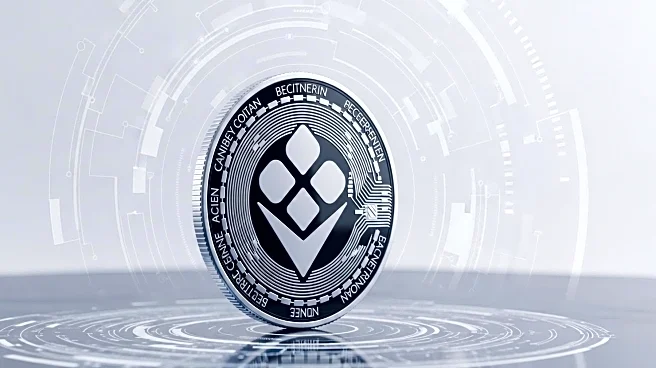What's Happening?
Decentralized finance (DeFi) lending has reached a significant milestone, with the total value locked (TVL) exceeding $40 billion. This surge reflects the growing interest among crypto users in yield opportunities offered by DeFi protocols, especially as traditional financial instruments provide limited returns. Aave, a leading lending platform, holds a substantial portion of this TVL, highlighting its influence in the DeFi space. However, recent events have exposed governance vulnerabilities within DeFi partnerships. A dispute between Aave and World Liberty Financial (WLFI) over a deal involving token supply and future revenue has led to a sharp decline in Aave's token price, revealing the fragility of governance structures in DeFi.
Why It's Important?
The growth in DeFi lending underscores a shift in investment strategies, with both retail and institutional investors seeking alternatives to traditional savings accounts and fixed-income instruments. This trend indicates a broader acceptance of DeFi protocols as viable financial tools. However, the governance challenges highlighted by the Aave-WLFI dispute raise concerns about the stability and reliability of DeFi systems. As DeFi continues to attract attention, regulatory scrutiny is likely to increase, potentially impacting the integration of these protocols into mainstream finance.
What's Next?
The future of DeFi lending will depend on the evolution of governance models and regulatory clarity. As TVL continues to grow, protocols like Aave must address governance issues to maintain user trust and security. The ongoing demand for yield-generating products suggests that DeFi will remain a focal point for financial innovation, but its success will hinge on the ability to scale while ensuring compliance and stability.
Beyond the Headlines
The integration of stablecoins into DeFi lending has played a crucial role in its expansion. Stablecoins like USDT and USDC are essential for lending and borrowing processes, offering a reliable medium of exchange. Their adoption by financial institutions has accelerated their integration into mainstream finance, highlighting their utility beyond the crypto-native ecosystem.











